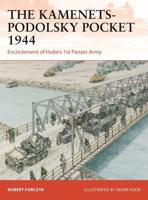Publisher's Synopsis
This historic book may have numerous typos and missing text. Purchasers can usually download a free scanned copy of the original book (without typos) from the publisher. Not indexed. Not illustrated. 1853 edition. Excerpt: ... On rounding Cape Alexander the full glory of being actually in the Polar Sea burst upon my thoughts, for then I beheld the open sea stretching through seven points of the compass, and apparently unencumbered with ice though bounded on east and west by two distinct headlands; the one on the western shore was named after His Royal Highness Prince Albert, as, by a happy coincidence, it was at twelve P.m., on his birthday, that the point was first observed. Immediately to the northward of Cape Alexander some extraordinary table-topped cliffs attracted our notice, and so perfectly even and marked into galleries did they appear, that my mind immediately associating them with the glassy sides of the Great Exhibition, I named them the Crystal Palace Cliffs. Very careful sketches were made of the headlands, and angles were taken to fix their position. The changed appearance of the land to the northward of Cape Alexander was very remarkable south of this cape; nothing but snow-capped hills and cliffs met the eye, but to the northward, an agreeable change seemed to have been worked by some invisible agency--here the rocks appeared of their natural black or reddish brown colour, and the snow, which had clad with heavy flakes the more southern shore, had only partially dappled them in this higher latitude, whilst the western shore, which was girt with a belt of ice upwards of twelve miles broad, seemed clad with perpetual snows. We pushed on while the weather was fair, and beautiful indeed was the prospect before us; the sun had just sheltered himself for an hour below the horizon, and still shot his rays far into the northern sky, tinging the snows on the western land with crimson hues, and throwing a glow over nature which ill accorded with the...









